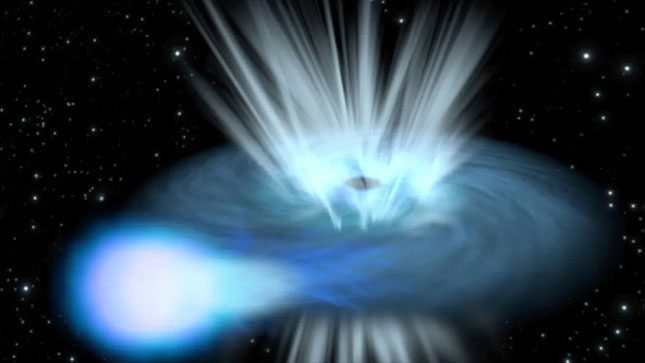Astronomers have discovered a new type of cosmic explosion. Within 10 days, this extraordinary explosion shone brighter than 100 billion suns before fading away almost completely – a brief and spectacular event that surpasses a typical supernova.
According to a study published on September 1 in the Astrophysical Journal, this swift and intense event may represent a new class of explosion never studied before.

An illustration of a black hole destroying a nearby star. Researchers believe that such a collision could be the cause of this new type of explosion. (Image: ESA / C. Carreau).
The lead author of the study, Matt Nicholl, an astrophysicist at Queen’s University Belfast, stated: “We have named this new source “Fast Luminous Cooling” or LFC. The delicate dataset we obtained rules out the possibility that this is another supernova.”
Supernovae are bright explosions that occur when massive stars (typically at least eight times the mass of the sun) burn through their nuclear fuel, collapse, and eject their outer gas layers into space.
Every year, astronomers observe hundreds of supernovae that suddenly brighten and then gradually fade. Typically, a supernova reaches peak brightness about 20 days after the explosion, shining billions of times brighter than the sun. In the following months, the explosion slowly diminishes. However, LFC is not a supernova.
The newly discovered explosion – detected by the Asteroid Terrestrial-impact Last Alert System (ATLAS) telescopes in Hawaii, Chile, and South Africa – occurred in a galaxy filled with sun-like stars that are too small to produce supernovae.
Co-author of the study, Shubham Srivastav, a researcher at Queen’s University, noted: “Our data shows that this event occurred in a giant red galaxy two billion light-years away from us. These galaxies contain billions of sun-like stars, but none are large enough to become a supernova.”
According to the researchers, in addition to its unusual location, the newly discovered explosion is much brighter and fades away much faster than a typical supernova. In the following 15 days, this object dimmed by two magnitudes and dropped to just 1% of its peak brightness only one month after it exploded.
The research team concluded that these explosions represent a new and very rare type of cosmic event that is likely unrelated to dying stars. So, what exactly is LFC? Currently, the research team can only speculate. Nicholl stated: “The most plausible explanation seems to be a black hole colliding with a star.”
However, even this explanation does not entirely fit. It may be that scientific models regarding collisions between stars and black holes need to be refined – or that astronomers do not yet have enough information about LFC to draw any conclusions. The team will continue to search for more of these mysterious explosions in galaxies closer to Earth.


















































